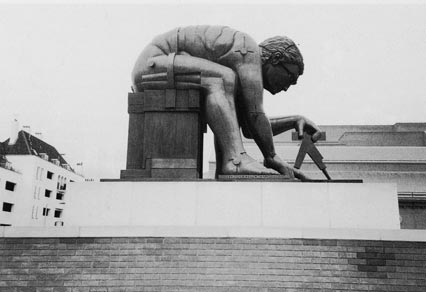
This Article From Issue
March-April 2003
Volume 91, Number 2
DOI: 10.1511/2003.12.0
Newton: The Making of Genius. Patricia Fara. xvi + 347 pp. Columbia University Press, 2002. $29.95.
An invented letter written by Isaac Newton to John Locke lies at the heart of a brief novel of love, pain and self-discovery published two decades ago by the Irish writer John Banville. Banville's The Newton Letter develops around the idea that the change undergone by his main character, a historian engaged on a life of Newton, mirrors a similar change in Newton's own life, revealed by the fictional letter. The historian abandons his book in a moment of frenzy that results when the world of other people presses in on his life of secluded scholarship. Just such a bout of lucid insanity has led Banville's Newton to give up science and mathematics.
Banville's disturbing little book plays on the isolation of writing and of discovery, and on the fact that the mundane is ultimately more important than the extraordinary, even for geniuses. The real Isaac Newton would have found this hard to believe: Unlike Banville's character, the real Newton did not apologize, and he tried hard to appear not to have any regrets during a long life of conspicuous material as well as intellectual success.

From Newton: The Making of Genius.
Patricia Fara makes no reference to John Banville and presumably has not been influenced by him, but her Newton is also an invention. He is the creation of disciples and opponents who debated his work after his death in 1727, the product of the consumer boom of the late 18th and early 19th centuries, the example required by the new university science of the century after 1830. The image of the saintly scholar that his friends cultivated with care at the end of his life, which can be seen to this day in his monument in Westminster Abbey, eventually gave way to a vision of Newton as the embodiment of British national pride and resourcefulness, reflected in the gloomy statue erected at his birthplace in Grantham in 1858. One wonders whether Margaret Thatcher was thinking more of Newton's intellectual decisiveness, his capacity for hard work, or his tendency not to suffer fools gladly when she decided to include him in her coat of arms as a supporter.
Fara tells us about the transformation of Newton's image and reputation by philosophers, poets, artists, scientists and bureaucrats. Although this may seem an inclusive list, Fara says relatively little about attitudes toward Newton outside England and almost nothing about the effect that reactions to his alchemical and theological studies have had on his posthumous status. She does give Thomas Jefferson a place in the pantheon of enlightened admirers of Newton. The evangelical readers of Newton's millenarian theology, on the other hand, who have created a very different portrait of his genius in 19th- and 20th-century America, get short shrift from this book.
In a late 19th-century Japanese print (which looks more like a picture of Oscar Wilde), Newton is shown sitting beneath an apple tree under the caption "Isaac Newton. Very great head of school but not pompous." Images like this do draw attention to Newton's importance for the presentation of cultural as well as scientific values. The uncomfortable, incongruous feelings that such renderings provoke can perhaps force us to think a little bit more about ourselves as well as about the past. Fara's treatment of the representation of Newton is thus designed to make us ask whether there is more to scientists than what they do or say they do.
Nevertheless, like the officials of the Royal Mint who famously misrepresented the Newtonian solar system on the old English £1 note, Fara does not trouble directly with Newton's science or mathematics. This will probably be a relief to most of her readers, although it has the unfortunate effect of leaving unclear just what all the fuss has been about. There is a problem with the well-worn postmodernist point that Newton is what we have made him: Why have we made him anything at all? The answer to that question must surely involve science and ideas, as well as scientists and their images. After all, the cantankerous and elderly Newton, who has always vied for public attention alongside the promising youth with his apple, fought his intellectual battles with Leibniz and others to prove that he had actually been right, not just to seem that way to generations astonished by his skulduggery.—Scott Mandelbrote, History, Peterhouse, University of Cambridge
American Scientist Comments and Discussion
To discuss our articles or comment on them, please share them and tag American Scientist on social media platforms. Here are links to our profiles on Twitter, Facebook, and LinkedIn.
If we re-share your post, we will moderate comments/discussion following our comments policy.